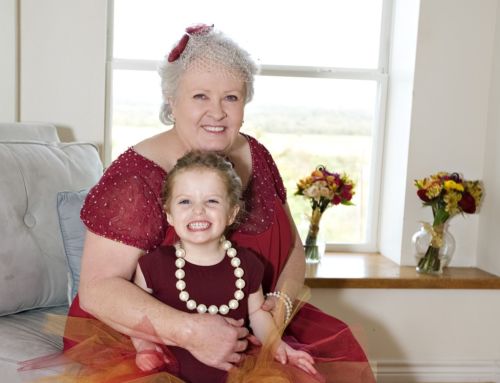The quality of marriage and intimate partnerships matters for our physical health not only when we are healthy but also when we live with and manage chronic health conditions. Using data from the HRS, we showed that higher negative relationship quality was prospectively associated with greater functional limitations both in two and four years among older adults diagnosed in the US.
It is well documented that marriage and nonmarital intimate partnerships are important for individuals’ health and well-being, particularly for older adults. Numerous studies examined how marital quality was associated with the mental health and survival of cardiovascular disease patients, and yet little research investigated the effect of marital quality on the physical health of individuals diagnosed with CVD. As cardiovascular disease (hereafter, CVD) continues to be an important leading cause of physical disability in the US and worldwide, it is important to understand how relationship quality is linked to older adults’ functional health after they are diagnosed with cardiovascular disease.
To bridge this research gap, we used longitudinal data from the Health and Retirement Study to examine how positive and negative relationship quality at baseline was associated with functional limitations in two and four years among partnered US older adults (i.e. 50 years old and above) diagnosed with CVD. We focused on functional limitations because the disablement process theory suggests that it is a critical stage through which chronic disease pathology progresses into disability. Additionally, according the life course framework, relationship quality can be viewed as resources/constraints that influence individuals’ life outcomes. The theoretical framework further suggests that the impact of resources and constraints (e.g. relationship quality) on individuals’ well-being can be shaped by their social context (e.g. socioeconomic status). Guided by the life course perspective, we also tested whether the link between relationship quality and functional limitations was moderated by household income, an indicator of socioeconomic status.
Our data were from the Health and Retirement Study (HRS), 2006-2012. In addition to its regular core surveys every two years, the HRS also collects information on psychosocial characteristics from its panel respondents every four years on a rotating basis with half samples. Due to this sampling design, information on baseline relationship quality came from 2006/2008 and the first follow-up was in 2010/2012. The literature on marital quality suggests that there are two related and yet distinct aspects of individuals’ marital appraisals, i.e. positive and negative. Following this literature, we examined positive and negative relationship quality respectively instead of using a global relationship quality index. Positive relationship quality was assessed by three questions asking about respondents’ perceptions of their spouse’s/partner’s supportive behavior: (1) “How much do they really understand the way you feel?”, (2) “How much can you rely on them when you have a serious problem?” and (3) “How much can you open up to them if you need to talk about your worries?” Negative relationship quality was measured by four questions on unsupportive behavior: (1) “How often do they make too many demands on you?”, (2) “How much do they criticize you?”, (3) “How much do they let you down when you are counting on them?” and (4) “How much do they get on your nerves?” Functional limitations were measured by questions asking respondents whether they had at least some difficulty performing 12 various tasks such as walking several blocks, jogging one mile and lifting/carrying weights over 10 lbs. We used multilevel linear regression models to estimate the association between individuals’ reports relationship quality at baseline and functional limitations in two and four years, while controlling for household-level variability.
We found that only negative relationship quality at baseline was significantly associated with functional limitations over a two- and four-year span, not positive relationship quality. Table 1 shows that higher negative relationship quality at baseline was significantly associated with greater functional limitations both in two and four years.
Table 1. The association of relationship quality with functional limitations among US older adults with CVD

Note: PRQ: positive relationship quality, NRQ: negative relationship quality.
Additionally, this association was further moderated by household income over a two-year period, suggesting that the link between higher negative relationship quality and greater functional limitation was weaker among those with higher household income. Figure 1 demonstrates how the association between negative relationship quality and functional limitations varied by high vs. low household income. It is clear from Figure 1 that the link between negative relationship quality and functional limitations is much steeper for older adults with lower household income.
Overall, our findings suggest that experiences of spouses’/partners’ unsupportive behavior could be a factor that contributes to worsening functional health among older adults with CVD. Furthermore, older adults of lower socioeconomic status can be a doubly disadvantaged group impacted by both negative relationship quality and lack of economic resources compared to their higher socioeconomic status peers.

Figure 1. Negative relationship quality at baseline and functional limitations in two years: high vs. low household income.
About the author:

Yan-Liang Yu, PhD, Assistant Professor of Sociology and Criminology, Howard University, Washington, DC, USA

Zhenmei Zhang, PhD, Associate Professor of Sociology, Michigan State University, East Lansing, MI, USA
This article is based on:
Yu, Y.-L. & Zhang, Z. (2019). Relationship quality and functional limitations among older adults with cardiovascular disease in the United States of America. Ageing & Society. DOI: https://doi.org/10.1017/S0144686X19000163











Leave A Comment